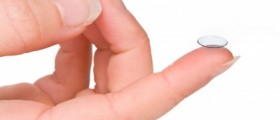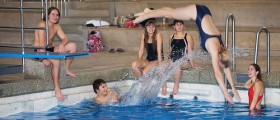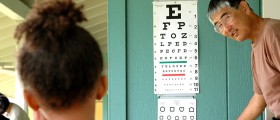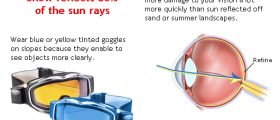
Photorefractive keratectomy (PRK) is a laser eye surgery procedure conducted to correct a person's vision and reduce dependency on glasses or contact lenses. In other words, it is used to the correct mild to moderate nearsightedness , farsightedness and astigmatism. The surgery works by reshaping the cornea, the clear front part of the eye, so that the light is properly focused onto the retina. There are many efficient techniques used to reshape retina, but most of the surgeons use laser. LASEK, also known as Laser-Assisted Sub-Epithelial Keratectomy, is a similar but more advanced laser surgical procedure where a permanent flap is created in the deeper layers of the cornea. One of the advantages of LASIK is that patients have less discomfort and obtain good vision more quickly, while in PRK recovery lasts for days and even months.
The advantages of PRK
PRK is very efficient and precise in correcting many cases of nearsightedness. About 80% of PRK patients have 20/20 vision without glasses or contact lenses one year after the surgery. Around 95%-98% have 20/40 or even better without glasses or contact lenses.
Preparing for the surgery
In order to prepare a patient for surgery, doctors will investigate patients’ medical history and get patient’s eyes tested. Tests normally include measuring corneal thickness, refraction, and pupil dilation. Patient will be asked not to wear rigid gas permeable contact lenses three weeks before the date of the surgery. Other kinds of contact lenses shouldn’t be worn at least three days before the surgery. The surgery is conducted under the local anesthesia and it lasts for a very short time - a maximum of about 10 minutes to do both eyes.
After the surgery
After the surgery patient will have to wear a bandage contact lens, for about 3 or 4 days. During this period the surface of the eye will heal. After the bandage is removed, patients may experience fluctuations between clear and blurry vision, for a couple of weeks post surgery. In some cases it may be required to wear glasses while driving or reading, until the vision fully stabilizes. The completely good vision may not be obtained for up to 6 weeks to 6 months following surgery.
Side-effects of the surgery
Almost all patients experience sensitivity to light, after the surgery. Discomfort usually lasts from 24 to 48 hours, but many of the side effects may occur anytime within the first six months after the surgery. Side-effects usually include loss of best vision achieved with glasses, minor glare, and minor halos around images.

















Your thoughts on this
Loading...